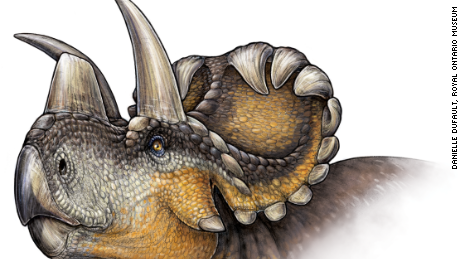-
Tips for becoming a good boxer - November 6, 2020
-
7 expert tips for making your hens night a memorable one - November 6, 2020
-
5 reasons to host your Christmas party on a cruise boat - November 6, 2020
-
What to do when you’re charged with a crime - November 6, 2020
-
Should you get one or multiple dogs? Here’s all you need to know - November 3, 2020
-
A Guide: How to Build Your Very Own Magic Mirror - February 14, 2019
-
Our Top Inspirational Baseball Stars - November 24, 2018
-
Five Tech Tools That Will Help You Turn Your Blog into a Business - November 24, 2018
-
How to Indulge on Vacation without Expanding Your Waist - November 9, 2018
-
5 Strategies for Businesses to Appeal to Today’s Increasingly Mobile-Crazed Customers - November 9, 2018
Scientists discover a new dinosaur with frills
Archaeologists have named a newly discovered dinosaur, adding to the Ceratopsidae family which includes the legendary Triceratops. They have named the newfound prehistoric dino species as “Wendy’s horned-face”.
Advertisement
“The frill is sort of ornamented by a pretty spectacular wave of gnarly hooks that project forward”, Dr. David Evans, one of the paleontologists, told NPR.
Ryan says these curved hooks may have been used in combat against predators, or in shoving matches between males.
A typical meal for a Wendiceratops, according to the study, would likely have been low-lying plants which it would then slice up with its leaf-shaped teeth before devouring them.
Wendiceratops, which lived 79 million years ago during the Cretaceous Period, provides insight into the early evolution of horned dinosaurs, a prominent group of four-legged herbivores including the well-known Triceratops that lived near the end of the age of dinosaurs.
The Wendiceratops had one horn protruding from its brow and a second from its nose, while it had a crown of curled hornlets at the top of its head, paleontologists said. Michael Ryan, a palaeontologist at the Cleveland Museum of Natural History sought to explain the phenomenon saying Sinoceratops to be the descendant of Wendiceratops with the ex- migrating to Asia from North America.
The bones were discovered in Alberta, Canada, and have been a part of an excavation process that’s been ongoing since 2011.
Advertisement
As to the name…”Wendiceratops” is for Wendy Sloboda (SLO-boh-dah) who found the fossils, and “pinhornensis” refers to the Pinhorn Provincial Grazing Reserve where the discovery took place in Alberta, Canada. In spite of being a bony structure made of horns, the ornamentation described above provided Wendy with a flawless curly hair look.




























